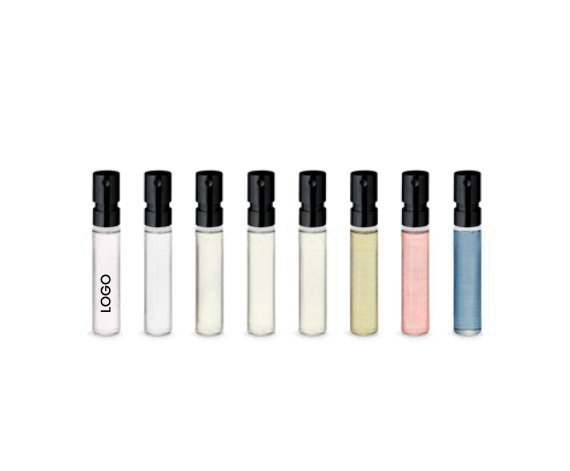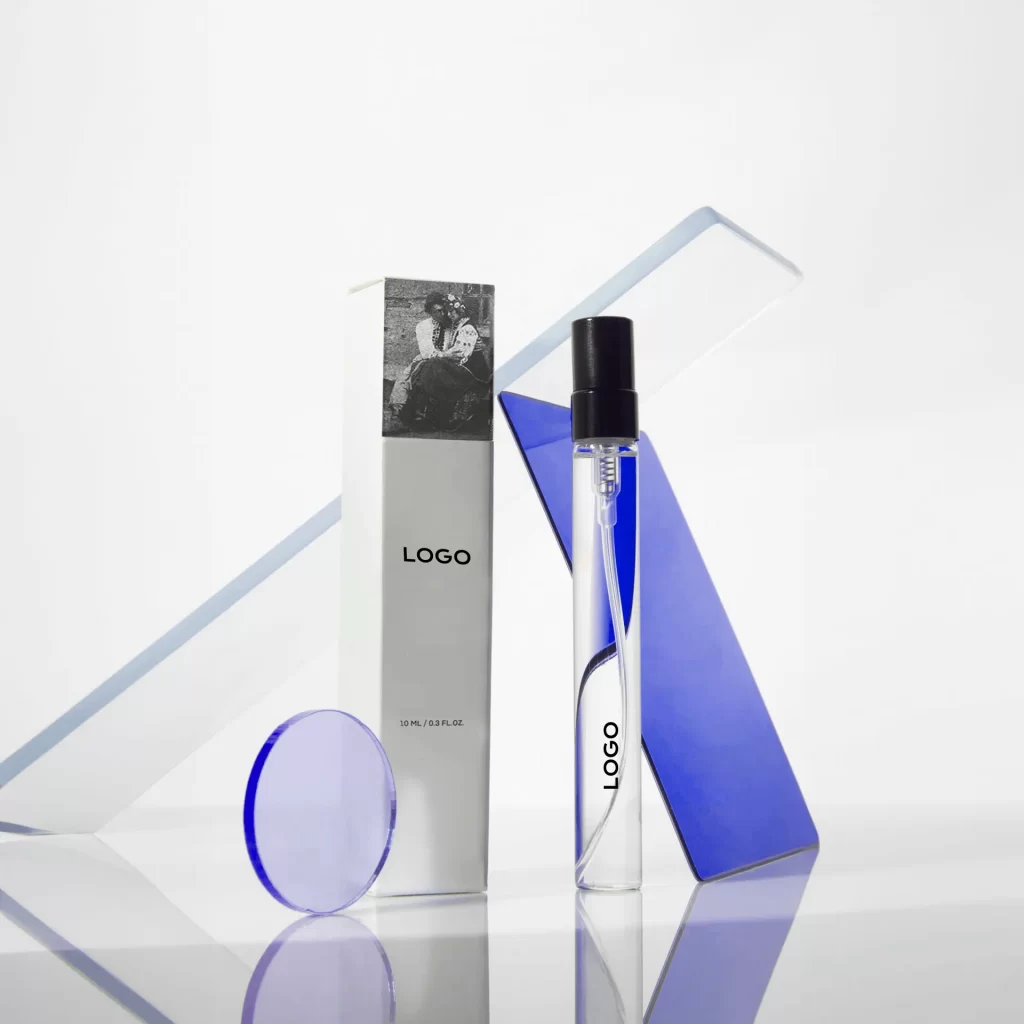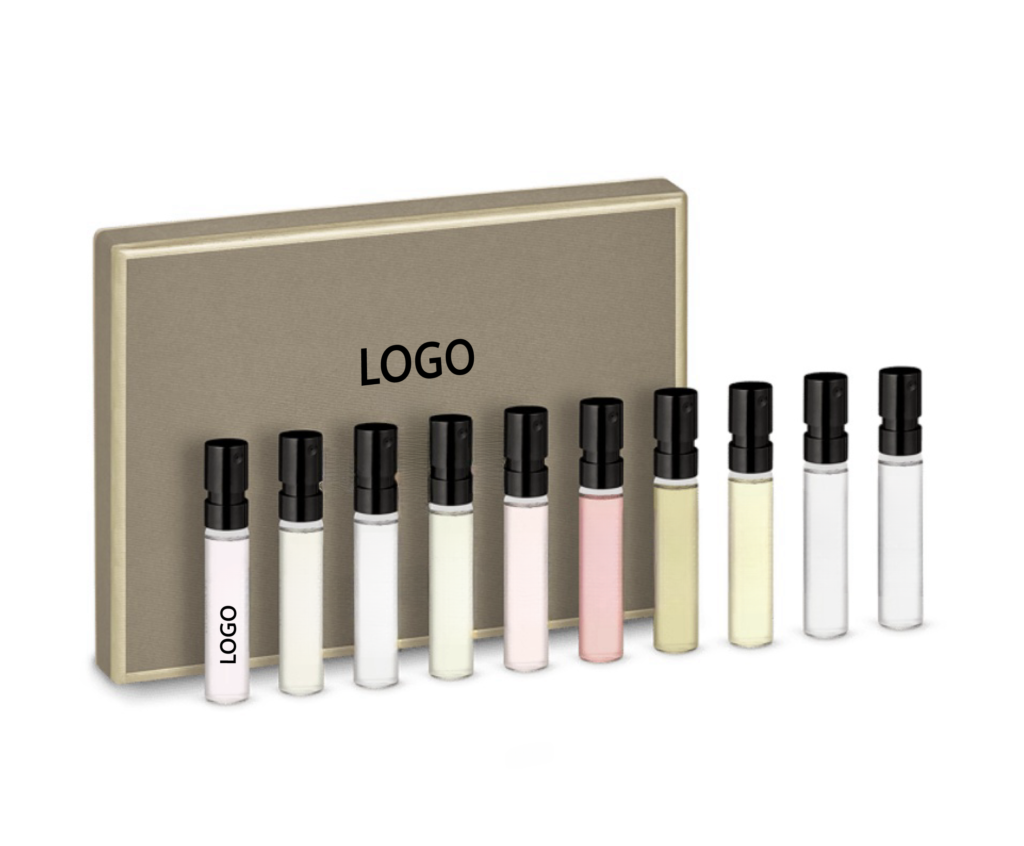Recovery and Reuse of 2ml Glass Sample Spray Bottles
introduction
With the rapid development of the perfume market, 2ml perfume sample spray bottle, as one of the main ways of experience and promotion, is widely used in special gifts, promotional activities and online sales. It is not only convenient for consumers to carry and try perfume, but also helps brand promotion and sales.
Perfume sample spray is made of different materials, such as glass bottle body, plastic or metal nozzle and bottle cap. Its multi material structure increases the difficulty of recycling. Each component’s different materials need to be disassembled and processed accordingly in order to achieve effective recycling and reuse.
A large number of unrecycled sample spray bottles will cause resource waste and environmental burden. Through reasonable recycling and disposal, not only can the waste of glass and plastic be reduced, but also the impact of disposable products on the ecology can be seen. Improving the recycling rate of small sample bottles has positive significance for environmental protection and sustainable development of resources.
Materials and characteristics
💫 Glass Bottle Body Main Body
The 2ml perfume sample bottle is generally made of high light transparent glass, which has good sealing performance and can maintain the stability of perfume ingredients. The glass material not only makes perfume less susceptible to external factors, but also presents a high degree of beauty and texture, which is convenient to observe the state of perfume.
💫 Spray Head and Bottle Cap
The spray head and bottle cap are usually made of plastic or metal, which is convenient for consumers to spray perfume by pressing. However, these components made of different materials need to be disassembled and classified during the recycling process, which increases the complexity of processing. In addition, the durability of plastic nozzles is not strong, and they are difficult to recycle, further increasing the difficulty of environmental treatment.
💫 Packaging Box Design
The package design of perfume sample bottle can be delicate and diverse, or simple and plain. But complex packaging not only increases production costs, but also increases the difficulty of recycling. Excessively exquisite and multi-layered packaging can generate a lot of waste when discarded, and it is difficult to classify and separate them, which has a certain negative impact on environmental protection.
Current recycling situation
💫 Market Situation
At present, the formal recovery system of most small capacity glass perfume spray bottles is still being improved, and many small sample bottles are directly discarded after use, resulting in a large waste of resources. Due to the small volume, scattered quantity and high recovery cost of perfume sample bottles, many recovery institutions did not specifically recycle such bottles.
💫 Shortcomings of the Recycling System
The material of sample perfume spray bottle is complex, and the combination of glass, plastic and metal makes its classification more difficult. The existing recycling system lacks specialized technology and comprehensive channels for handling these small multi material containers, especially in the disassembly, separation, and reuse stages, resulting in many small sample bottles being unable to enter the effective recycling process.

💫 Consumer Perception
The public’s review of perfume samples is weak. Many consumers believe that sample spray can be used up and discarded, and they lack understanding of environmental protection value. In addition, the lack of recycling promotion for small sample bottles makes it difficult for consumers to find convenient recycling channels, further reducing the recycling rate of such products.
Recycling process
💫 Classification and Disassembly
In the recycling process, the sample bottles of perfume need to be classified and disassembled first. Due to the fact that the sample bottle consists of a glass bottle body, a plastic bottle body, and a metal part, classification and disassembly are key steps in recycling. Separate glass, plastic, and metal components separately using professional equipment or manual disassembly for further processing.
💫 Cleaning Treatment
The disassembled parts of the bottle body need to be cleaned to remove the residual liquid such as perfume and other impurities in the bottle, so as not to affect the subsequent recovery process. This process not only improves the quality of recycled materials, but also avoids secondary pollution to the environment caused by residual chemicals.
💫 Material Reuse
-
- Glass Bottle: The cleaned glass bottle body can be melted and reprocessed to produce new glass bottles or other glass products, thereby achieving resource regeneration.
- Plastic Nozzle and Bottle Cap: After precision processing of plastic components, they can be used in the production of recycled plastics as raw materials for manufacturing plastic products, which helps reduce dependence on native plastics.
- Metal Components: Metal components can be recycled and melted, used to manufacture other metal products, or directly reused in related industries to improve resource recycling efficiency.
Through the above process, all parts of the perfume sample bottle can be reasonably reused, so as to reduce the impact of waste on the environment and maximize the circulation of materials.
Discussion on Recycling Mode
💫 Brand Recycling Plan
Perfume brands can take the responsibility of environmental protection and recycle sample spray by establishing an exclusive recycling mechanism. For example, brands can set up recycling points at their Shanghai counters in stores to encourage consumers to return used sample bottles. Through a brand initiated recycling program, not only can the recycling rate of sample bottles be increased, but it can also help the brand showcase its environmental image and promote sustainable development.
💫 Third Party Recycling Platform
Third party offline recycling platforms can provide consumers with more convenient recycling services. These platforms can cooperate with recycling companies to provide on-site collection or masonry placement recycling options, making it easy for consumers to dispose of used sample bottles. In addition, the platform can also achieve more efficient recycling and resource recycling through data-driven management.
💫 Consumer Reward Mechanism
In order to improve the recycling rate, a reward mechanism can be used to motivate Flyers to actively participate. Brands or recycling platforms can give back to consumers through points, discount coupons, or gifts. For example, consumers can earn brand points or discounts on their next purchase by recycling a certain number of sample bottles. This type of reward mechanism can effectively increase consumers’ environmental awareness and promote the popularization of sample bottle recycling.
Through diversified recycling modes, the recycling rate of 2ml perfume sample bottles can be effectively improved, and a win-win situation between environmental protection and brand value can be achieved.
Suggestions for innovative recycling design

💫 Easy to Decompose Material
For the convenience of recycling, it is recommended to use environmentally friendly and easily degradable materials to manufacture sample bottles. For example, using recyclable glass, biodegradable plastics, or metal alloys to simplify the processing flow after recycling. Choosing easily degradable materials not only facilitates recycling and dismantling, but also reduces environmental burden during disposal.
💫 Modular Design
The modular design is implemented to make the glass body, spray head, bottle cap and other parts of the sample bottle easy to disassemble and classify by consumers after use. This can effectively reduce the difficulty of disassembly, improve the efficiency of recyclable materials such as glass, promote the recycling of bottle bodies, and make consumers more involved.
💫 Repeatable Filling
Designing reusable sample bottles can help reduce the frequency of using disposable bottles. Consumers can refill the sample bottle with their favorite perfume directly at the store or designated place. This method not only extends the service life of the sample bottle, but also provides consumers with personalized choices and an environmentally friendly experience.
Through the above methods, 2ml perfume sample bottle will be easier to recycle, reduce the impact on the environment and provide more possibilities for sustainable development.
Conclusion and Prospect
At present, the recycling of 2ml glass perfume sample bottles is facing difficulties in separating multiple materials and lack of recycling channels. Weak environmental awareness among consumers and other issues. By improving the recycling system, promoting diversified recycling models, and innovating bottle design, the recycling efficiency of small businesses can be significantly improved, reducing resource waste.
With the progress of environmental protection related technologies and the popularity of the concept of sustainability, more efficient separation, cleaning and reuse technologies can be expected to be applied to the recycling of sample bottles in the future, to help propose a more perfect recycling system, so that perfume sample spray will have more environmental value throughout its life cycle.
The environmental recycling of small sample bottles requires the joint participation of consumers and brand enterprises. Consumers should actively support recycling programs and develop environmental habits; Enterprises need to take on environmental responsibility, provide convenient recycling channels and incentive mechanisms. Joint efforts can promote the closed-loop recycling ecosystem of the industry, contributing to environmental protection and sustainable development.

 Italiano
Italiano Português
Português

Greetings I am so thrilled I found your website, I really found you by accident, while I was searching on Digg for something else, Anyhow I am here now and would just like to say kudos for a incredible post and a all round interesting blog (I also love the theme/design), I don’t have time to browse it all at the minute but I have saved it and also added in your RSS feeds, so when I have time I will be back to read much more, Please do keep up the excellent job.
Greetings! Your website’s presentation and content are exemplary
Top market value for UPS batteries
Take it easy, and may your heart be as light as a feather